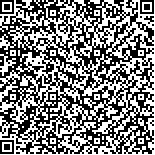| 摘要: |
| 于1999年进行两批次紫海胆 (Anthocidaris crassispina)育苗试验,浮游幼体以螺旋藻粉+光合细菌和球等鞭金藻+螺旋藻粉的两组饵料进行培育,当幼体发育变态 为后期八腕幼体并30%幼体管足从前庭腹合体伸出之后,以已培养底栖硅藻的塑料薄膜进行采苗。附着后的稚海胆经过3个多月培育,壳径达到3~5mm剥离到 网箱中进行中间培育。本试验两批共培育出壳径为2~11mm的海胆苗105155个,探索出易于推广应用的紫海胆育苗工艺。 |
| 关键词: 紫海胆(Anthocidaris crassispina) 育苗 附着率 成活率 |
| DOI: |
| 分类号: |
| 基金项目: |
|
| The technique of artificial breeding of Anthocidaris crassispina |
|
|
| Abstract: |
| The techniques of artificial breeding of the larvae and juveniles of Anthocidaris crassispina were studied in 1999. The planktonic larvae of A. crassispina were fed with either of the following foods: Spirulina platenesis powder + photosynthetic bacteria or Spirulina platenesis powder + Isochrysis galbana. After the larvae developed to later eight-arm larvae and more than 30% of the larvae extended their vestibular complex, the transparent PE film with well-developed benthonic algae was used to collect them. 3 months after settlement, the shell diameters of the juvenile urchins reached 3~5mm and they were transferred into cages for middle culture. In this study, 105 155 young urchins with 2~11mm in shell diameter were obtained and the applicable and suitable techniques for artificial breeding of A. crassispina to be popularized were gained. |
| Key words: Anthocidaris crassispina artificial breeding settlement rate survival rate |
